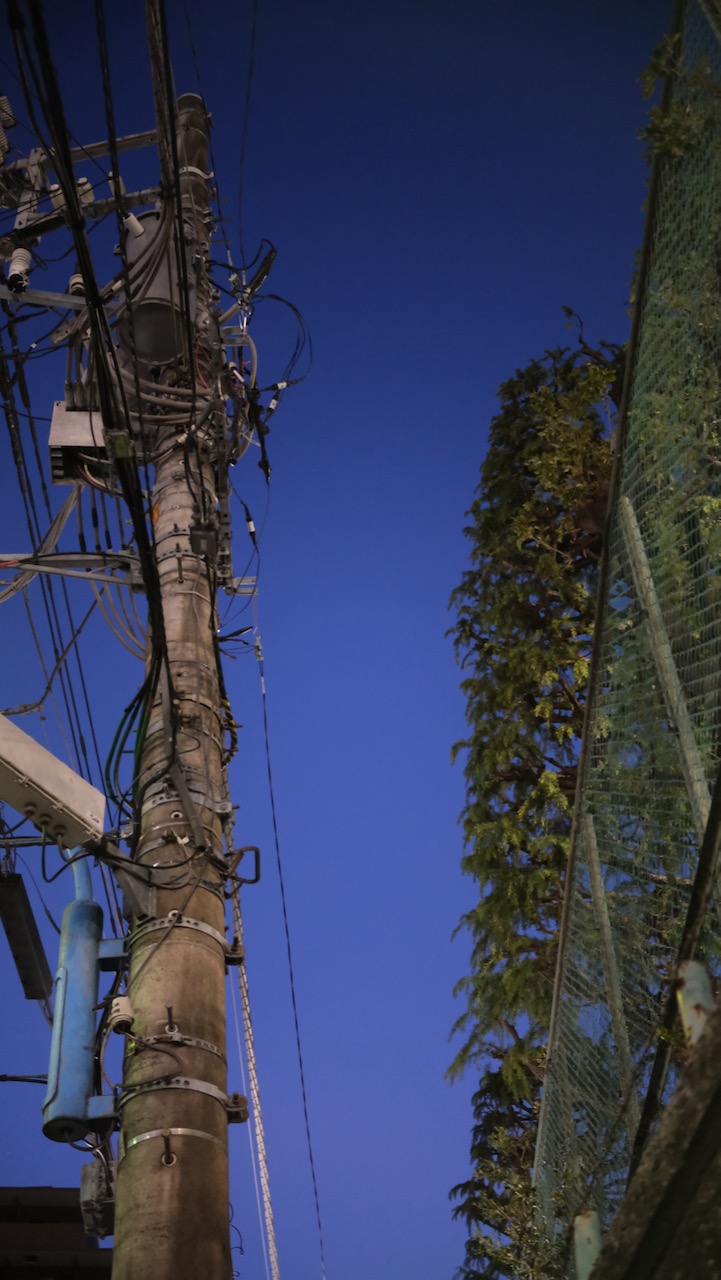Today is the last day of class.
I haven’t started carving my cherry wood block yet. I’m actually a bit afraid to start cutting into the wood, I have visions of my knife snapping loudly and a piece flying off. And… the exercises glued to my block are actually very,very small.
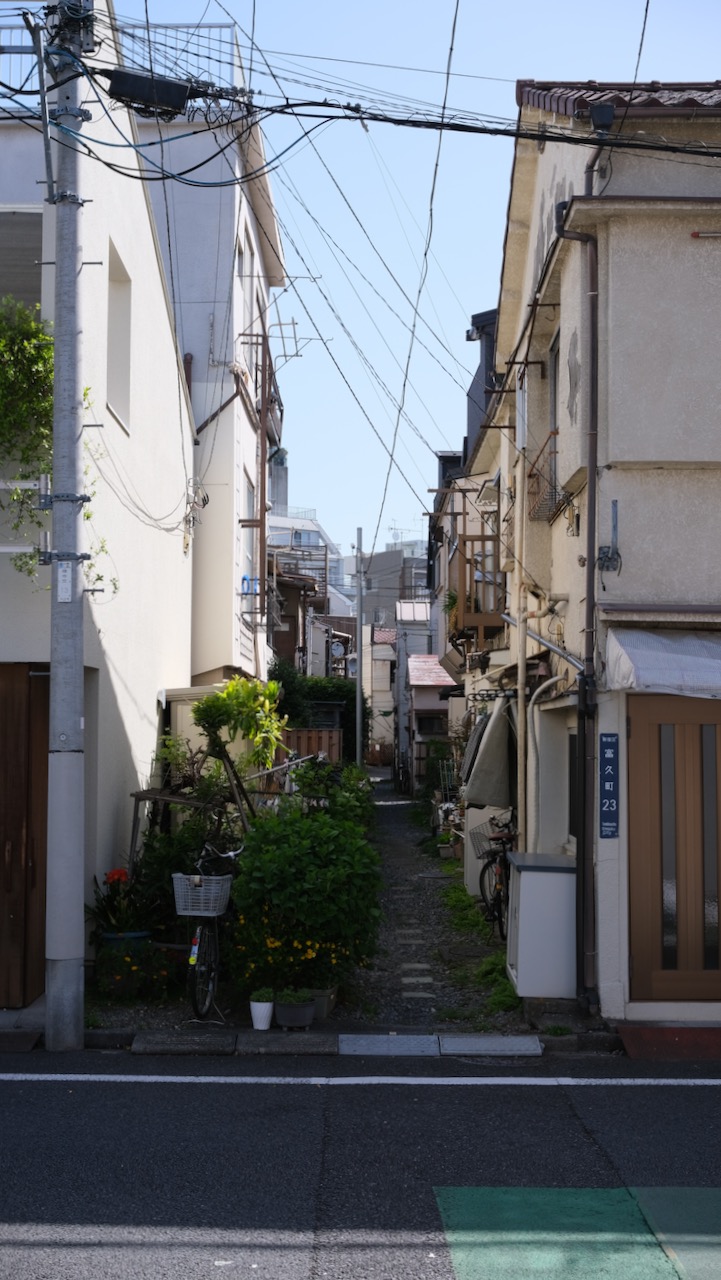
It’s a sunny day, a lovely walk to the studio. I enjoy it all the more because I miss a bit of sun and fresh air during our days with the master. I make a mental note of some places I want to photograph on the way back.
As we enter the studio, there is a set of freshly sharpened knives on both of our tables. So he made it after all! The Sensei worked on the tools until 1am last night and then stayed in the studio. Alexandra shows me a picture of the breakfast he made for himself this morning. Wow, he’s a good cook too, it looks like a picture of a menu straight out of a book.
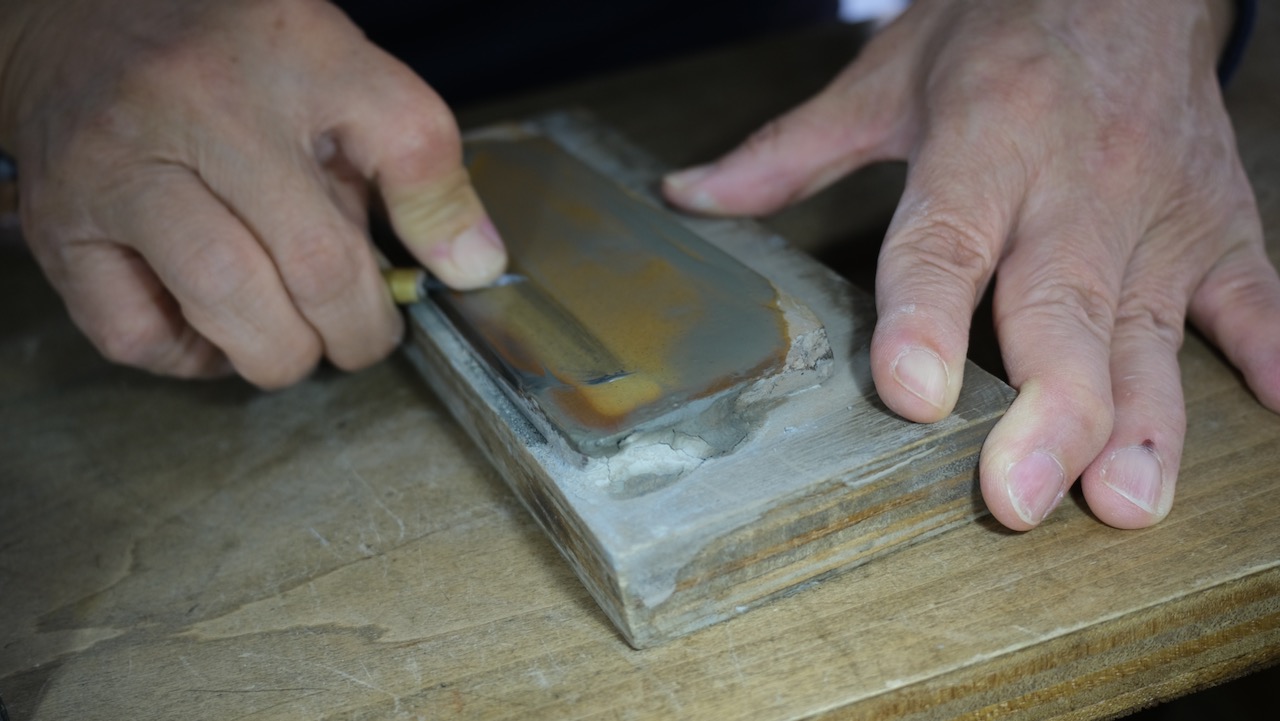
We are immediately given an explanation about the care of our equipment. Quite the opposite of what Terry told us last week. It’s becoming a habit, these different methods of getting things done.
Later we talk about blind embossing. I almost jump out of my seat as he starts to press the paper into the block with his elbow. One look at Vladimir tells me that he’s relieved that his explanation (and painfull lessons to me) has turned out to be ‘true’.

This is the opportunity to present Sensei with our Mermaid. We talk about our aching elbows and our ‘discovery’ of a different way to achieve blind embossing.
He examines our print thoroughly and asks various questions about the paper. It’s striking how quickly questions about the paper are asked. The bokashi are also discussed.
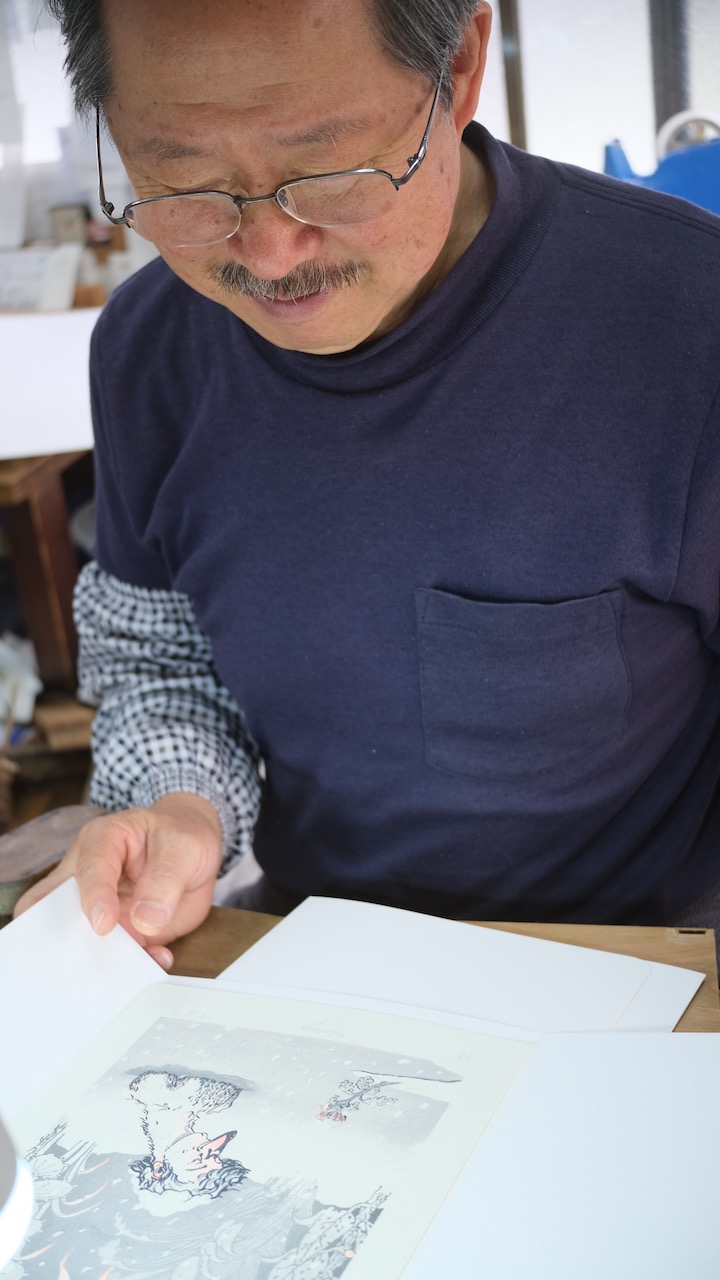
Our second print is brought out - immediately Sensei says “he’s sitting in an onsen!” Right away we have inspiration for the title for our work ( later we’ll call it ‘The Wrong Onsen’). Approving grunts. Vladimir shows off his own work. “Beautifully printed, must have been difficult, right?” asks the master. Vladimir gets a few questions about the what and why of the things he depicts. He blushes a little.
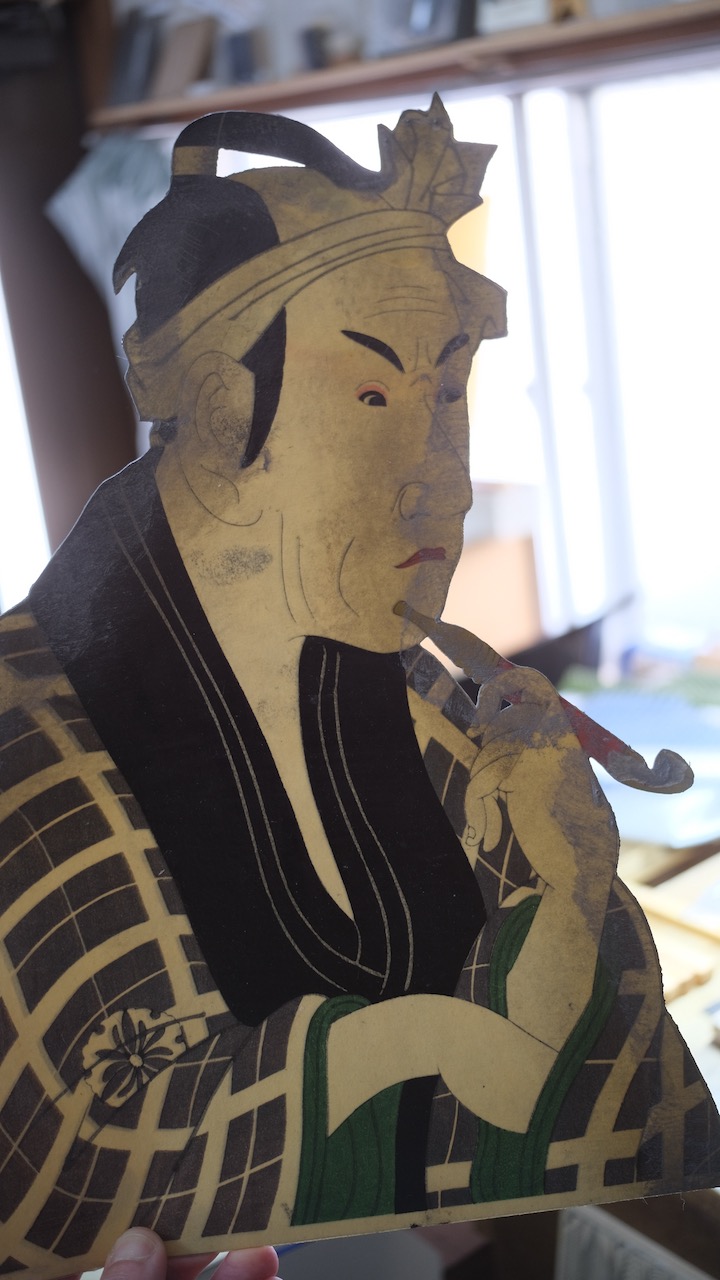
The Sensei also explains how he prints Kira Kira (=mica or glitter printing). There are three methods to print mica, he explains us the oldest one. In short, the parts of the print that need to be free of glitter are covered with a stencil. The rest is painted over with a mixture of mica and glue. And after years, Vladimir finally gets the answer to how the crackle effect in some prints is created.
Sensei pulls out a portfolio of prints to illustrate. When I ask if I can have a closer look at the portfolio, he pulls out stacks of portfolios from a cupboard of works he has carved. We were already impressed, but this is really over the top.
For dessert we each get one of his Christmas-cards and a mandala-print.
During dinner at our favourite hotel, the conversation suddenly turns to Dürer. Neither Sensei nor Alexandra here have ever heard of him before. Sensei thinks the rhino is an engraving and promises to show us after dinner how stamps are made here in the same way. We also find out that his wife loves to cook, is crazy about karaoke and that his birthday is 30 June.

Back in the studio, he first changes into his work clothes and then starts rummaging around behind us. For the umpteenth time he pulls out an arsenal of wonderful tools. Burins he made himself and a kind of vise that my father would love. Vladimir immediately starts taking measurements so that he can make one at home. Later Sensei shows us the smallest chisel he has made from the iron of a broken umbrella or sometimes from a picket file. It must be stainless steel.

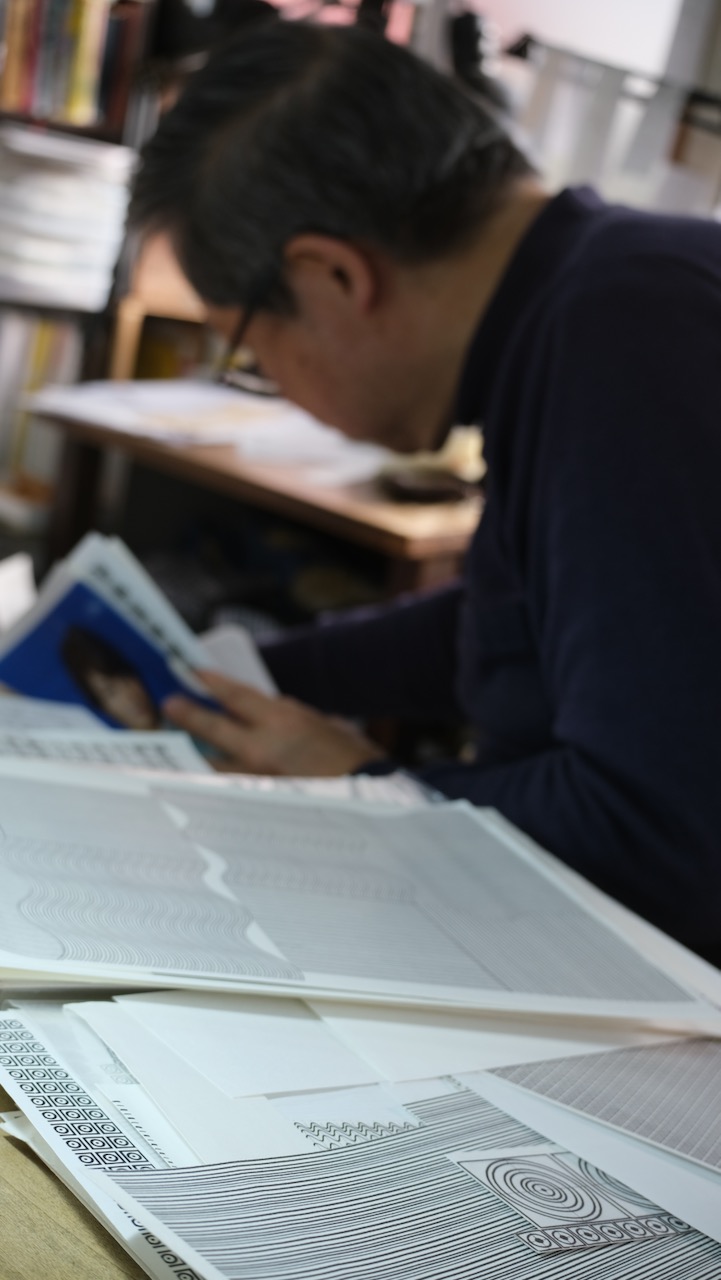
I dare to ask him for a stamp in my book of stamps. Once he makes a mistake in direction and you’re not so sharp. A bit clumsy sometimes, our sensei. But still a nice stamp. Through the stamp we also learn the meaning of his name: a combination of ‘the smell of the morning’ and ‘the origin of spring’. How beautiful is that!
The day is almost over, I have managed to cut two mini circles from my block. I ask Sensei if I should practise the soft wood exercises first. After some thought he agrees. First practice and in Belgium we will tackle the difficult exercises to improve. I agree and feel relieved as I quickly cut a few lines in the soft wood. I can already see a clear difference from the first day. My hands are sweating less.
The lesson is over. The daily settling in ritual begins. I carefully ask if there are any traditional printers who will take on students. I would like to return for a month to apprentice with a traditional printer. Apprenticeship/mastering with a Japanese master sounds good… Unfortunately, he says, printers (we heard something similar about papermakers) keep their doors tightly shut. Even for Japanese. But he promises to call his friend in Kyoto (a master printer) for more information.
Vladimir quickly goes to the 7/11 to get some money. He returns a little later. Problem! He has exceeded the limit on both his Visa and his bank card. He can’t withdraw any more money. Not until Monday at the earliest. Lots of phone calls and emails. Everyone wants to help. It’s agreed that I’ll bring the money to the print shop tomorrow.
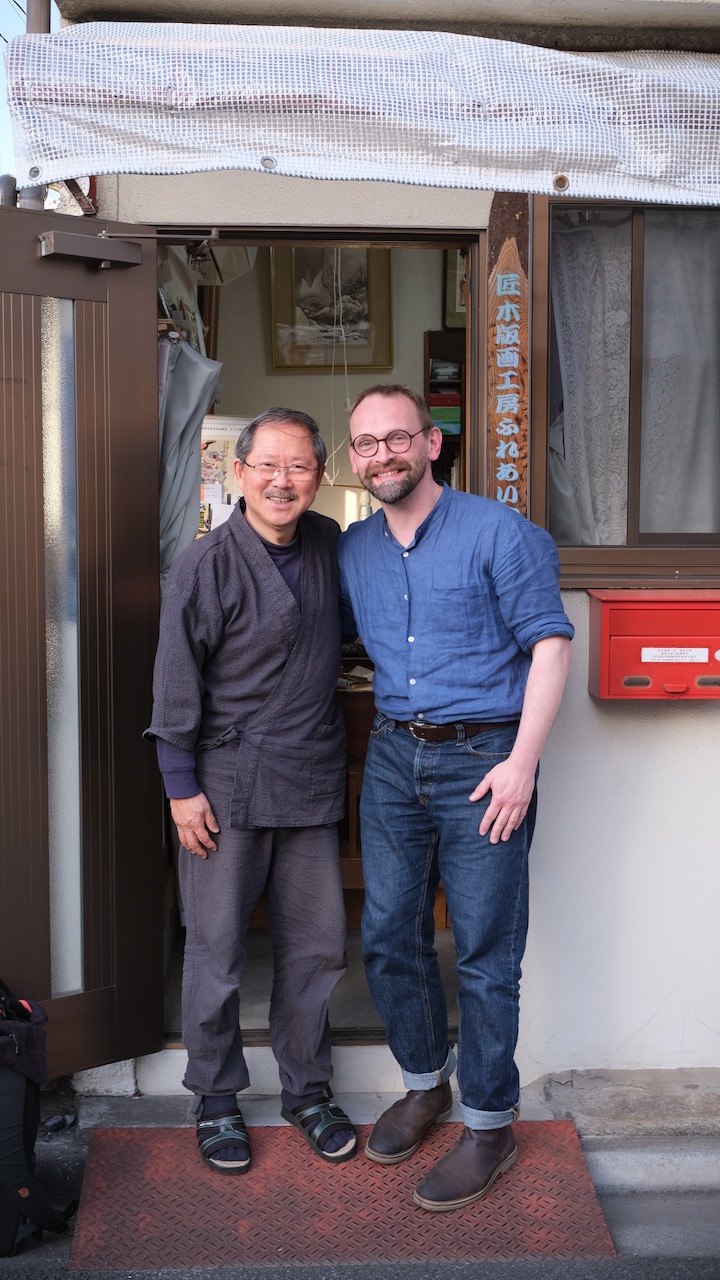
We take some pictures in front of the door. Sensei puts on his vest and holds us tight to pose for the photo. It was nice here. We wave one last time, say goodbye to Alexandra and walk into town.
Vladimir feels uneasy. Understandable. Luckily there are two of us. And I still have some budget left.

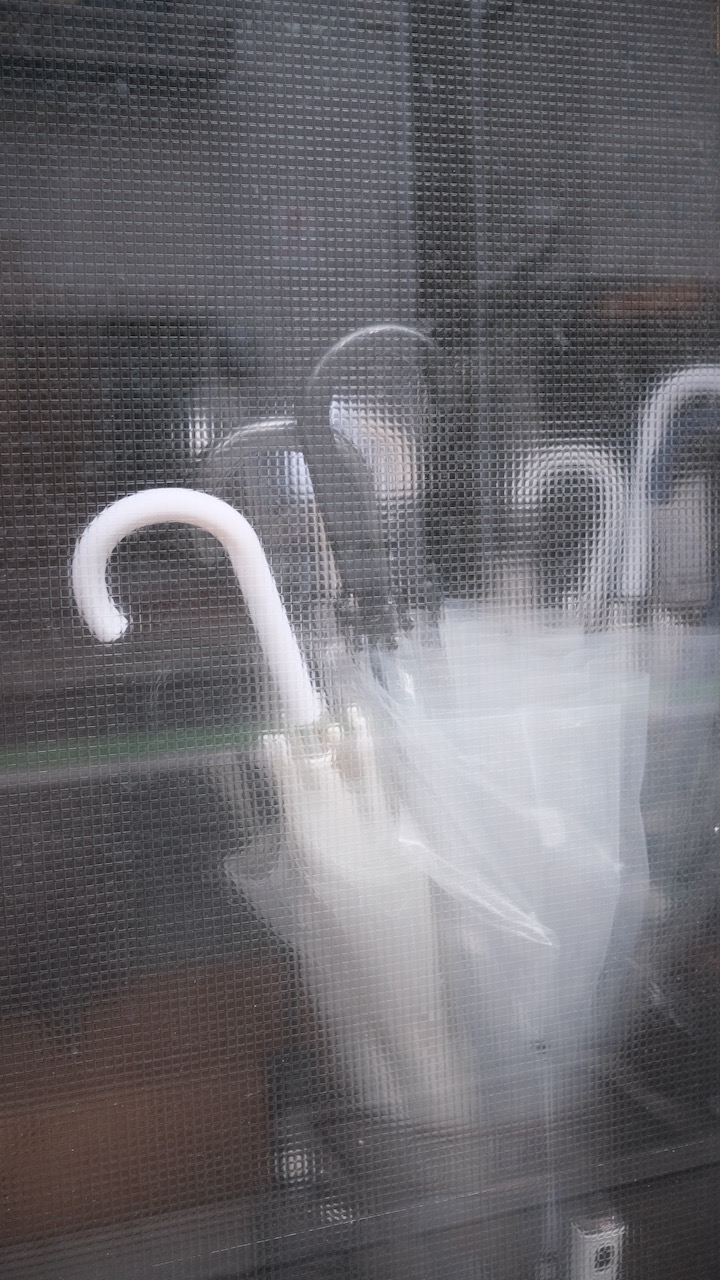
It’s almost midday in Belgium. Vladimir’s girlfriend calls the bank and Tomo, Alexandra’s husband, even comes to our apartment to help and possibly lend Vladimir some money. That wouldn’t happen so fast in Belgium, I think…
Finally, some papers have to be signed online and the limit should be raised within a few hours.
Fingers crossed!
